How to make an Easter wreath – to dress your home beautifully
Made with everlasting flowers this Easter wreath will create a pretty feature on the front of a house
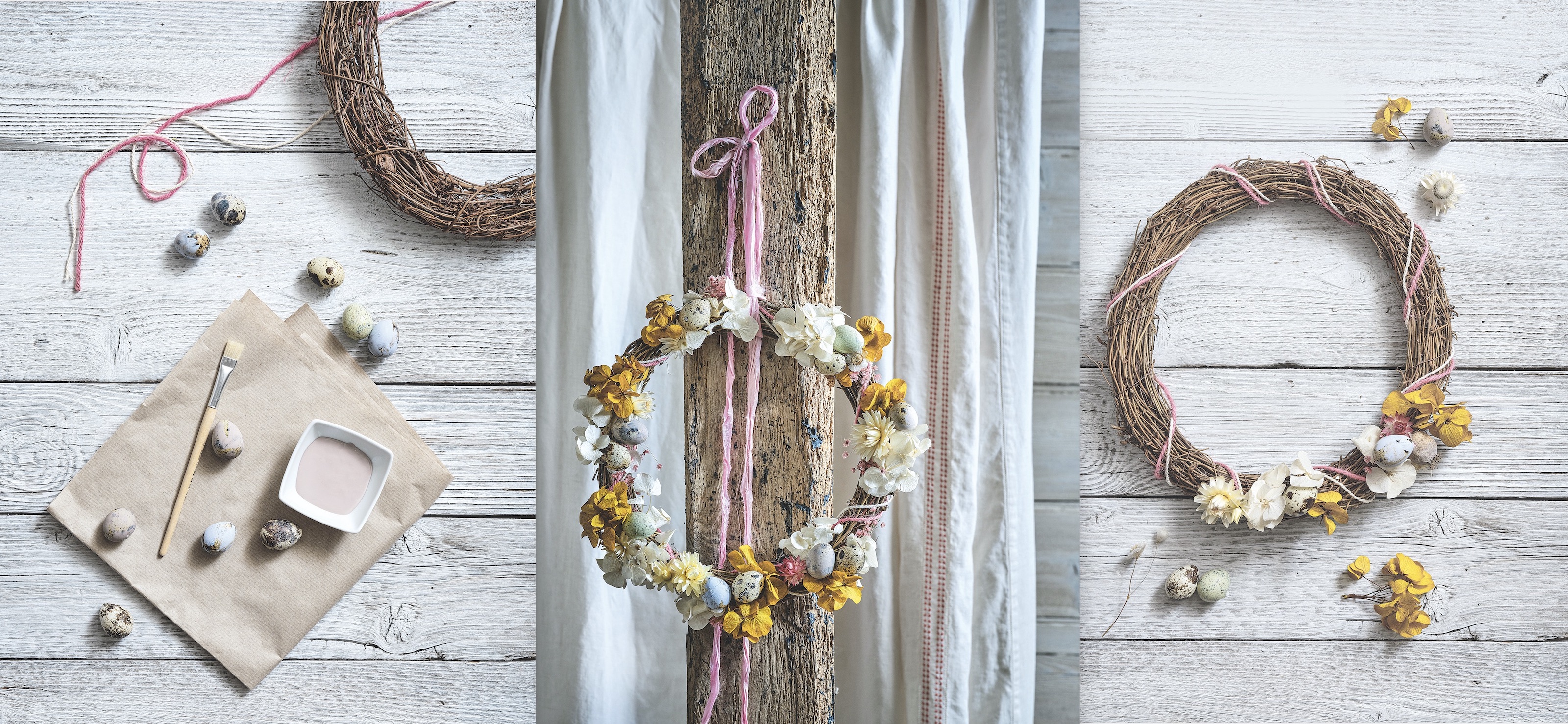
An Easter wreath made from preserved flowers and quails’ eggs makes a wonderful display that can trim a door or decorate a porch well beyond the Easter weekend.
Associated with springtime, the season of birth and renewal, the essential ingredients of an Easter wreath – spring flowers and buds, eggs and even found elements such as feathers – will bring seasonal style to your home decor, and pretty color and detail to the exterior of your home.
Made using dried flowers, this design is one of the Easter wreath ideas you can use each year to decorate, and it can be created in just a few simple steps.
How to make an Easter wreath – and essential ways to style it
An all-important part of Easter decorating ideas, these Easter wreath ideas can be fixed on a door, but it could also be used inside your home and hung over a mirror, or placed on a table to create a centerpiece.
You could make a living spring wreath with embedded narcissi, daffodil or hyacinth bulbs, for a fresh take on this seasonal decor idea. Or for a longer-lasting display, the version below uses preserved flowers and blown quails’ eggs for a wreath that won't wilt and will bring color and style to your home through spring.
You will need:
- Grapevine wreath, from florist’s
- Dried flowers
- Colored string
- Ribbon
- Hot glue gun
1. Prepare the quails’ eggs
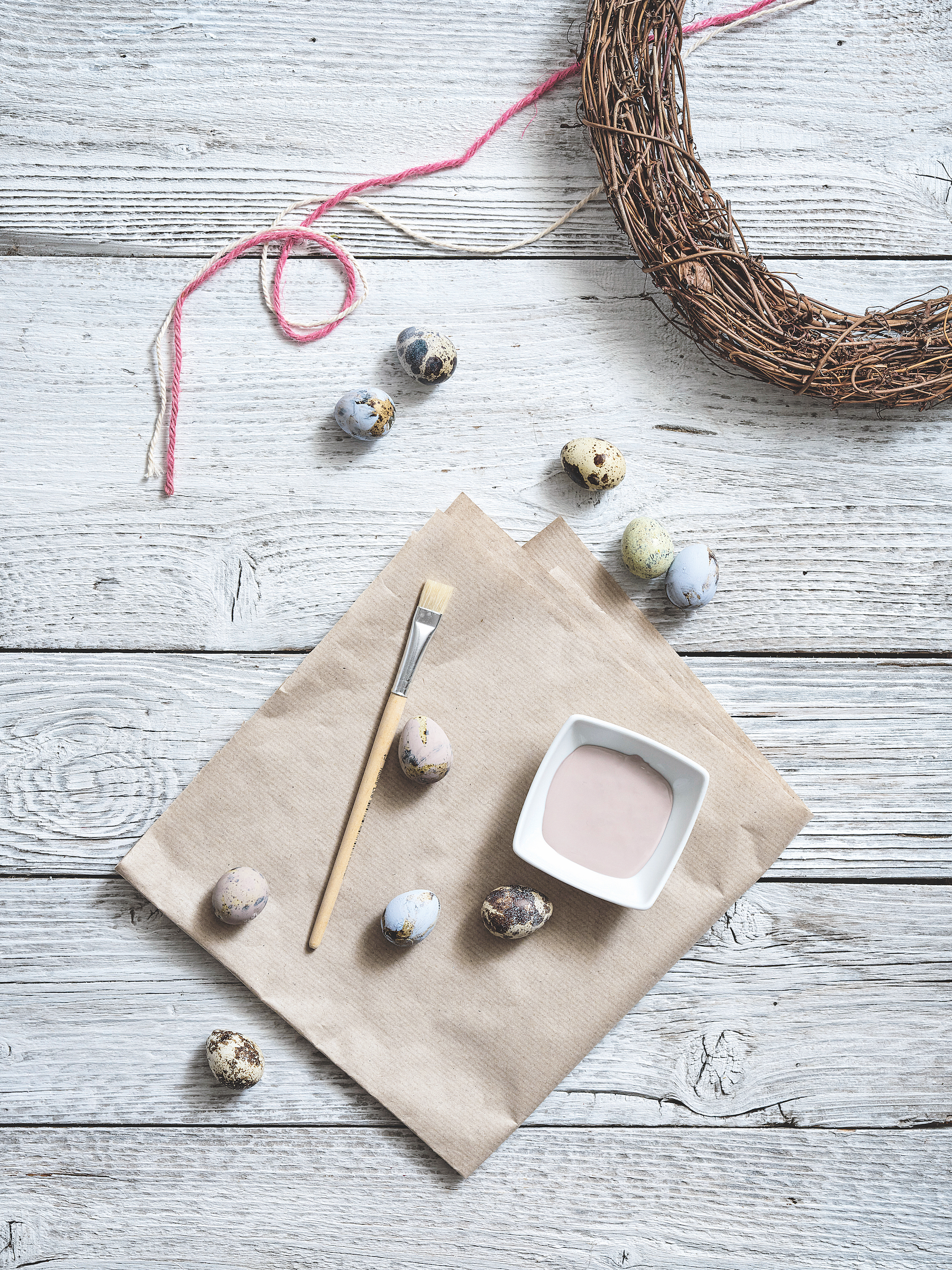
Prepare the quails’ eggs by blowing the contents out. To blow the eggs, first make a small hole at the top of the egg with a needle, and a slightly larger one at the base.
Then cover the holes with your fingers and shake the egg to scramble the contents. Place your mouth over the small hole at the top of the shell and blow out the egg contents. Alternatively, insert a paper straw into the top hole and blow. Collect the eggs in a bowl to cook with later.
Design expertise in your inbox – from inspiring decorating ideas and beautiful celebrity homes to practical gardening advice and shopping round-ups.
Next, wash and dry the eggs.
Paint the quails’ eggs with a thin paint wash (that is, paint diluted with water), which will let the pretty speckles show through the color. We chose a blend of nude and pastel shades. Leave to one side to dry.
2. Prepare the wreath base
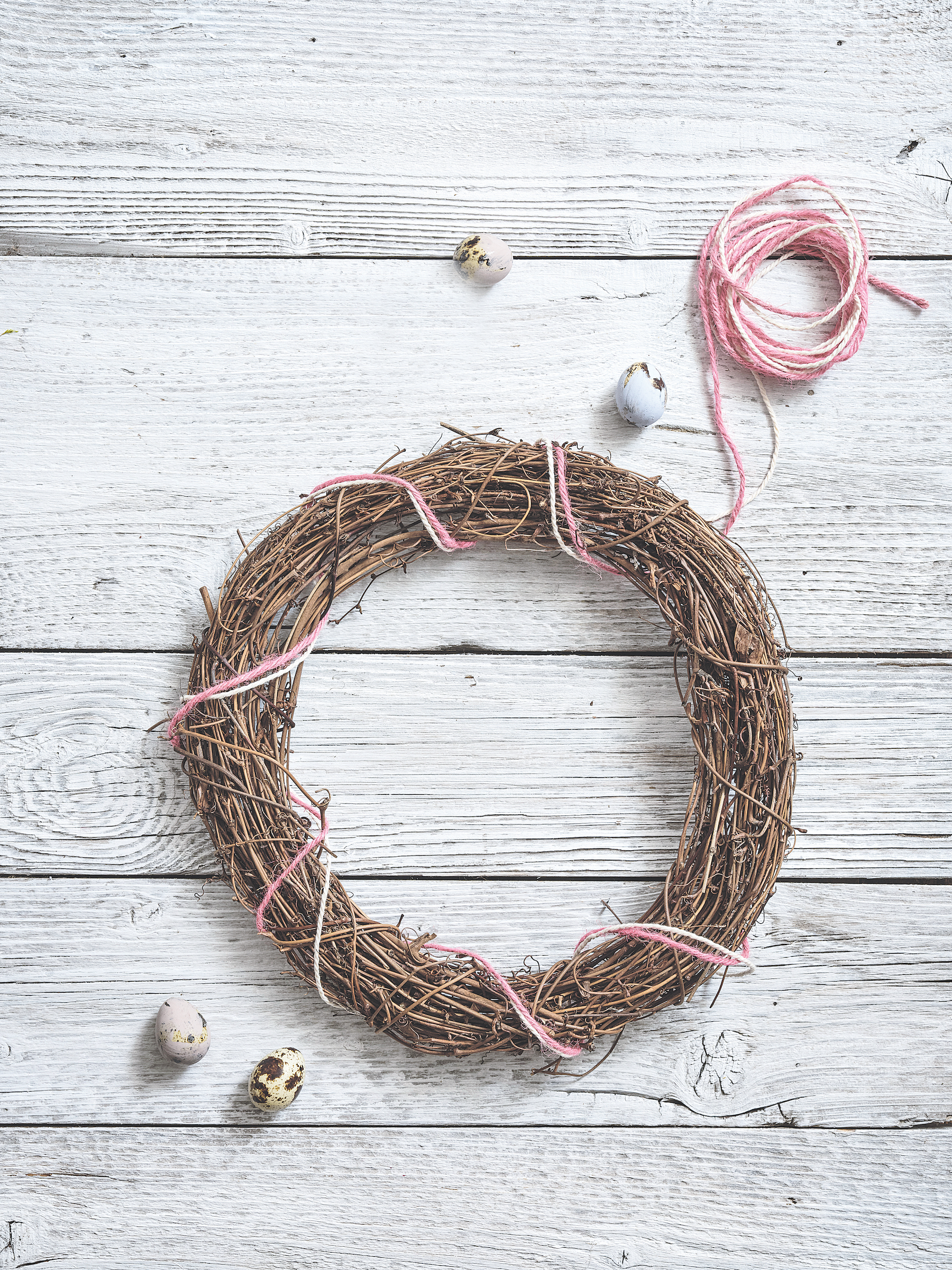
Taking a prepared grapevine wreath, twist threads of string around the wreath to add a touch of color. Tie the ends to secure.
3. Glue on the flowers and eggs
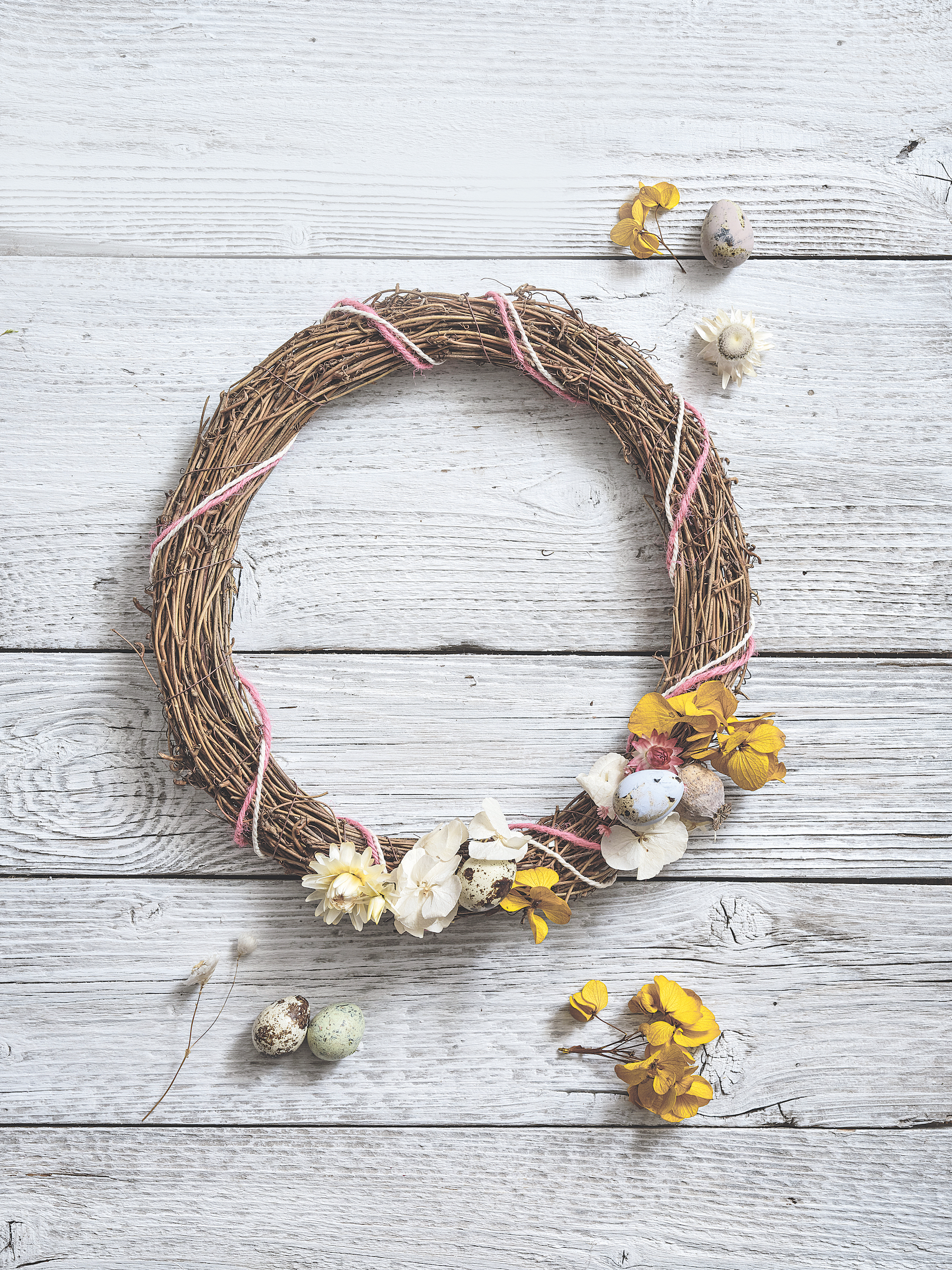
Working around the wreath, push flowers into the wreath wire.
Add the painted eggs and single flower heads, using a hot glue gun to secure them in place.
4. Hang the wreath
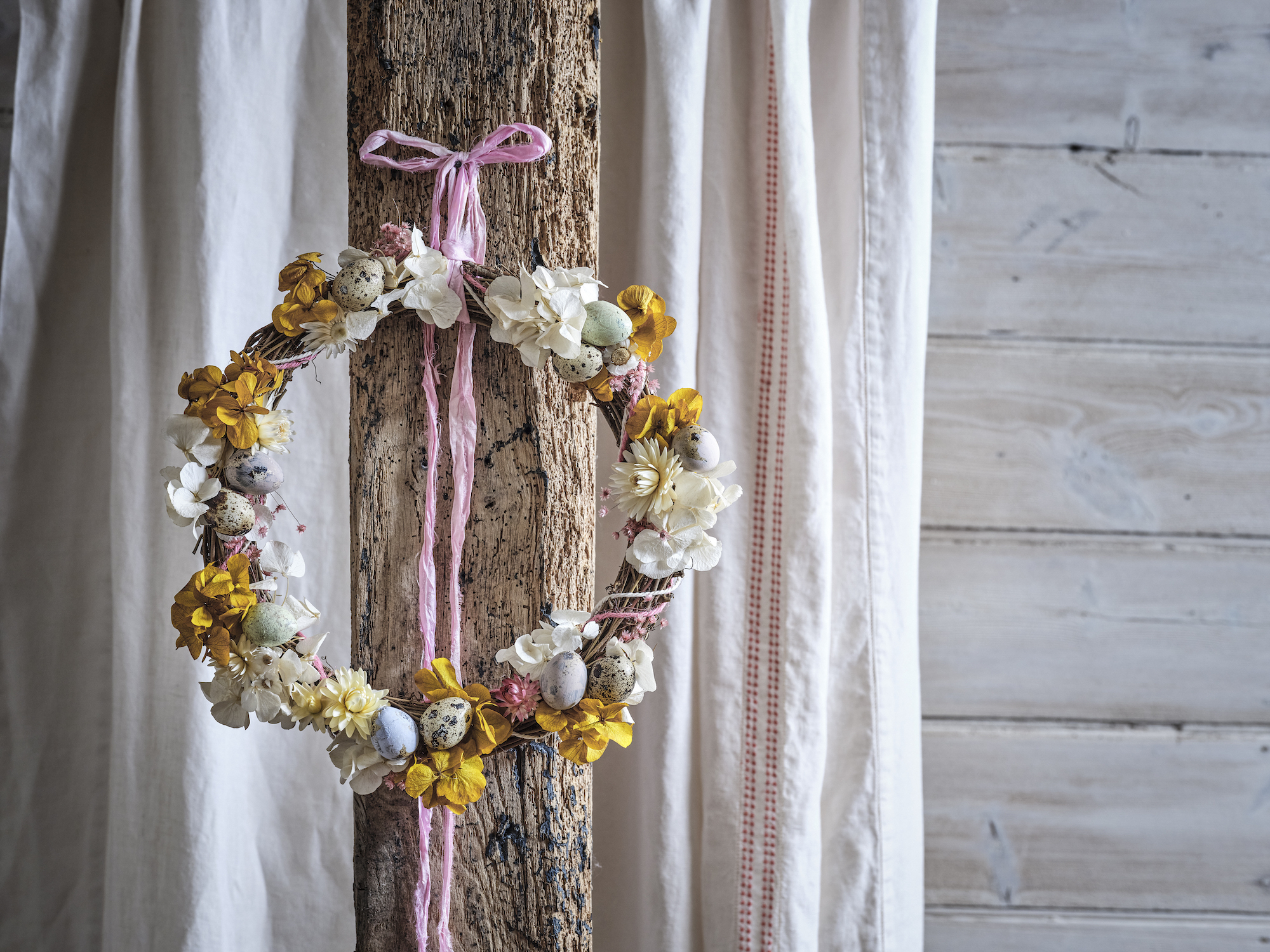
Tie a ribbon around the wreath, ready to hang it in place on a door handle or a porch post.
As an alternative to hanging the wreath outside, you could make more than one and arrange a selection of wreaths at different heights to create a focal point on a wall or over a mirror. Alternatively, lay a single wreath flat on a table and use it as a centerpiece for your Easter table decoration ideas.
How do you make an easy Easter wreath?
The easiest way to make an Easter wreath is to take a ready-made wreath base that already has some artificial foliage, and to attach seasonal flowers and live foliage to it, picked from your garden or bought from a local florist. Use florists' twine to attach foliage first, working your way around the wreath, finishing it off with pretty blooms.
What is the best base for making an Easter wreath
We really like to use an artificial foliage-only wreath for making Easter wreaths. Lyvdec's artificial eucalyptus wreath from Amazon is our favorite base for wreaths – its leaves look realistic and it can be used for making Easter wreaths, then stripped back for summer, fall and Christmas wreaths, too.
Andrea has been immersed in the world of homes, interiors and lifestyle since her first job in journalism, on Ideal Home. She went from women's magazine Options to Frank. From there it was on to the launch of Red magazine, where she stayed for 10 years and became Assistant Editor. She then shifted into freelancing, and spent 14 years writing for everyone from The Telegraph to The Sunday Times, Livingetc, Stylist and Woman & Home. She was then offered the job as Editor on Country Homes & Interiors, and now combines that role with writing for sister title homesandgardens.com.


